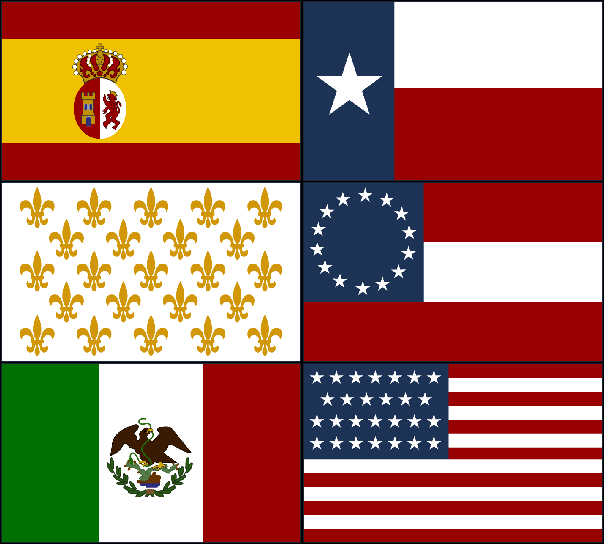One thing that makes Texas special is that six governments have presided or “flown their flag” over Texas. One question we receive here at TexasProud quite often is “What are the six flags that were flown over Texas?”
The Six Flags Over Texas is used to describe the six nations, Spain (1519–1685; 1690–1821), France (1685–1690), Mexico (1821–1836), the Republic of Texas (1836–1845), the Confederate States of America (1861–1865), and the United States of America (1845–1861; 1865–present) that had sovereignty over portions of the territory of the U.S. state of Texas. The “six flags” are also shown on the reverse of the Seal of Texas and continues to be a reminder of Texas’s rich and expansive history.
Spain: 1519 – 1821
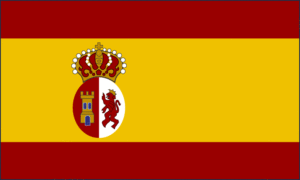 In 1519, Spain became the first nation to claim sovereignty over Texas and the land north of the Medina and Nuces Rivers. Several explorations of Texas soon followed, including a map making expedition led by Alfonso Alvarez de Pineada in 1519, the 1540 explorations by shipwrecked Spaniards Alvar Nunez and Caveza de Vaca, and a 1601 expedition led by Juan de Onate. It wasn’t until the late 17th century when Spain discovered the remnants of the failed French colony of Fort Saint Louis in 1689, that Spain began seriously settling in Texas. Led by Alonso de Leon in 1690, Spain established the first mission in Texas, known as the “Mission San Francisco de los Tejas.” Native tribes soon became resistant to the Spanish’s presence, and many of the missionaries abandoned the area for the next two decades. In 1716, the Spanish returned to southeastern Texas and founded the first civilian settlement, known as “San Antonio.” By 1810 during the height of Spanish occupation, San Antonio had grown to about 5,000 Spaniards, most of them small farmers or ranchers. While the Spaniards have long left the state of Texas, Spanish influence can be found in the state’s name (derived from the Spanish word “tejas” meaning friend), and in many city names, such as Corpus Christi and El Paso.
In 1519, Spain became the first nation to claim sovereignty over Texas and the land north of the Medina and Nuces Rivers. Several explorations of Texas soon followed, including a map making expedition led by Alfonso Alvarez de Pineada in 1519, the 1540 explorations by shipwrecked Spaniards Alvar Nunez and Caveza de Vaca, and a 1601 expedition led by Juan de Onate. It wasn’t until the late 17th century when Spain discovered the remnants of the failed French colony of Fort Saint Louis in 1689, that Spain began seriously settling in Texas. Led by Alonso de Leon in 1690, Spain established the first mission in Texas, known as the “Mission San Francisco de los Tejas.” Native tribes soon became resistant to the Spanish’s presence, and many of the missionaries abandoned the area for the next two decades. In 1716, the Spanish returned to southeastern Texas and founded the first civilian settlement, known as “San Antonio.” By 1810 during the height of Spanish occupation, San Antonio had grown to about 5,000 Spaniards, most of them small farmers or ranchers. While the Spaniards have long left the state of Texas, Spanish influence can be found in the state’s name (derived from the Spanish word “tejas” meaning friend), and in many city names, such as Corpus Christi and El Paso.
France: 1685 – 1690
 In 1684, French explorer Robert de La Salle sailed for the Americas with four hundred people and four large ships. The expedition and attempted colonization were plagued with misfortunes from the start, as their ships landed at Matagorda Bay, Texas, 600 miles west of the intended target: the Mississippi River. By 1690, disease, famine, hostile Indians, and internal strife wiped out the remaining inhabitants of the small colony of Fort St. Louis and effectively ended the French’s exploration of the region.
In 1684, French explorer Robert de La Salle sailed for the Americas with four hundred people and four large ships. The expedition and attempted colonization were plagued with misfortunes from the start, as their ships landed at Matagorda Bay, Texas, 600 miles west of the intended target: the Mississippi River. By 1690, disease, famine, hostile Indians, and internal strife wiped out the remaining inhabitants of the small colony of Fort St. Louis and effectively ended the French’s exploration of the region.
Mexico: 1821 – April 21, 1836 – San Jacinto Day
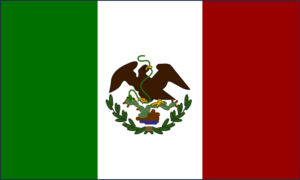 After a grueling 11-year war, Mexico overthrew Spanish colonial rule in 1821 and the region of Texas fell under Mexican control. Soon after, Stephan F. Auston received a land grant from a Mexican empresario (land agent) and led 300 US citizens into the new territory. But tensions soon came to a boiling point when the governor of Mexico, Santa Anna, sent troops into Texas to force Martial law. When a troop of Mexican soldiers had come to get their cannon from the city of Golaid in 1835, Texians refused, and waived a flag that said, “Come and Take it!” Furious with Mexico, Anglo-Americans and Tejano setters banded together and voted to declare Texas’s independence on March 2, 1836. Just 4 days later, on March the 6th, Santa Anna led his army to Alamo and Goliad, and brutally massacred nearby residents. General Sam Houston and his army of Texians soon faced Santa Anna’s army along the banks of Buffalo Bayou. The final Battle of San Jacinto on April 21, 1836 won independence for Texas. Although Mexican political rule was forcefully removed from Texas, Mexican culture remains deeply embedded in Texas, from classic “Tex-Mex” foods like barbecue, chili, and tacos to Mexican celebrations like Cinco de Mayo.
After a grueling 11-year war, Mexico overthrew Spanish colonial rule in 1821 and the region of Texas fell under Mexican control. Soon after, Stephan F. Auston received a land grant from a Mexican empresario (land agent) and led 300 US citizens into the new territory. But tensions soon came to a boiling point when the governor of Mexico, Santa Anna, sent troops into Texas to force Martial law. When a troop of Mexican soldiers had come to get their cannon from the city of Golaid in 1835, Texians refused, and waived a flag that said, “Come and Take it!” Furious with Mexico, Anglo-Americans and Tejano setters banded together and voted to declare Texas’s independence on March 2, 1836. Just 4 days later, on March the 6th, Santa Anna led his army to Alamo and Goliad, and brutally massacred nearby residents. General Sam Houston and his army of Texians soon faced Santa Anna’s army along the banks of Buffalo Bayou. The final Battle of San Jacinto on April 21, 1836 won independence for Texas. Although Mexican political rule was forcefully removed from Texas, Mexican culture remains deeply embedded in Texas, from classic “Tex-Mex” foods like barbecue, chili, and tacos to Mexican celebrations like Cinco de Mayo.
The Republic of Texas: 1836 – 1845
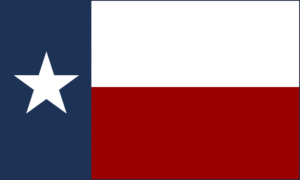 After a tumultuous war with Mexico, The Republic of Texas emerged as a new nation in 1836, and quickly applied for annexation to the United States, but was rejected by the Secretary of State. The prominent Democrat and Whig parties at the time, opposed the introduction of Texas, a vast slave-holding region. Since Mexico refused to acknowledge the sovereignty of Texas, many feared that the annexation of Texas would soon lead to a war with Mexico. Consequently, the region of Texas became the Republic of Texas and elected Sam Houston as the first president. The small town of Waterloo was chosen to be the capital and it was renamed Austin – in honor of Stephen F. Austin, and a Constitution of the Republic of Texas was written.
After a tumultuous war with Mexico, The Republic of Texas emerged as a new nation in 1836, and quickly applied for annexation to the United States, but was rejected by the Secretary of State. The prominent Democrat and Whig parties at the time, opposed the introduction of Texas, a vast slave-holding region. Since Mexico refused to acknowledge the sovereignty of Texas, many feared that the annexation of Texas would soon lead to a war with Mexico. Consequently, the region of Texas became the Republic of Texas and elected Sam Houston as the first president. The small town of Waterloo was chosen to be the capital and it was renamed Austin – in honor of Stephen F. Austin, and a Constitution of the Republic of Texas was written.
Bonus Video: How did Texas become a Republic?
Confederate States: 1861 – 1865
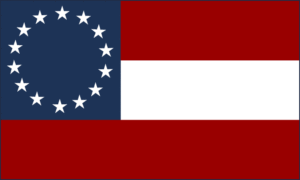 When the Civil War broke out in 1861, many Texans were opposed to any interference from northern politicians seeking to abolish the institution of slavery, and consequently the State of Texas decided to join with the Southern Confederate states. Governor Sam Houston resigned and refused to swear allegiance with the Confederates. Over 70,000 Texans served in the Confederate army until Texas along with the confederate West, finally surrendered on June 2, 1865. On June 19, federal forces arrived in Galveston to occupy Texas, enforce United States law, and began the process of readmitting Texas into the Union
When the Civil War broke out in 1861, many Texans were opposed to any interference from northern politicians seeking to abolish the institution of slavery, and consequently the State of Texas decided to join with the Southern Confederate states. Governor Sam Houston resigned and refused to swear allegiance with the Confederates. Over 70,000 Texans served in the Confederate army until Texas along with the confederate West, finally surrendered on June 2, 1865. On June 19, federal forces arrived in Galveston to occupy Texas, enforce United States law, and began the process of readmitting Texas into the Union
United States: 1845 – 1861 and 1870 – present
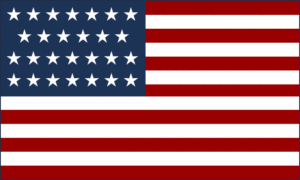 In 1845 Texas became the 28th state of the US. The US president at the time was James K. Polk. In a special ceremony, J. Pinckney Henderson became the first governor of the State of Texas. After 16 years in the Union, Texas seceded and fought in the Civil War as a Confederate state. Following the South’s surrender in 1865, Texas and the other Southern states were occupied by Union troops during Reconstruction and were forced to ratifying the Fourteenth and Fifteenth Amendments to the Constitution, which granted full citizenship and equal rights to those formerly enslaved. Texas was formally readmitted to the Union on March 30, 1870. Texas is now the second-largest U.S. state by both area (after Alaska) and population (after California), with major cities including Houston, San Antonio, and Dallas. The “Lone Star State” continues to provide rich history, culture, and food to its residents, and the rest of the United States.
In 1845 Texas became the 28th state of the US. The US president at the time was James K. Polk. In a special ceremony, J. Pinckney Henderson became the first governor of the State of Texas. After 16 years in the Union, Texas seceded and fought in the Civil War as a Confederate state. Following the South’s surrender in 1865, Texas and the other Southern states were occupied by Union troops during Reconstruction and were forced to ratifying the Fourteenth and Fifteenth Amendments to the Constitution, which granted full citizenship and equal rights to those formerly enslaved. Texas was formally readmitted to the Union on March 30, 1870. Texas is now the second-largest U.S. state by both area (after Alaska) and population (after California), with major cities including Houston, San Antonio, and Dallas. The “Lone Star State” continues to provide rich history, culture, and food to its residents, and the rest of the United States.
